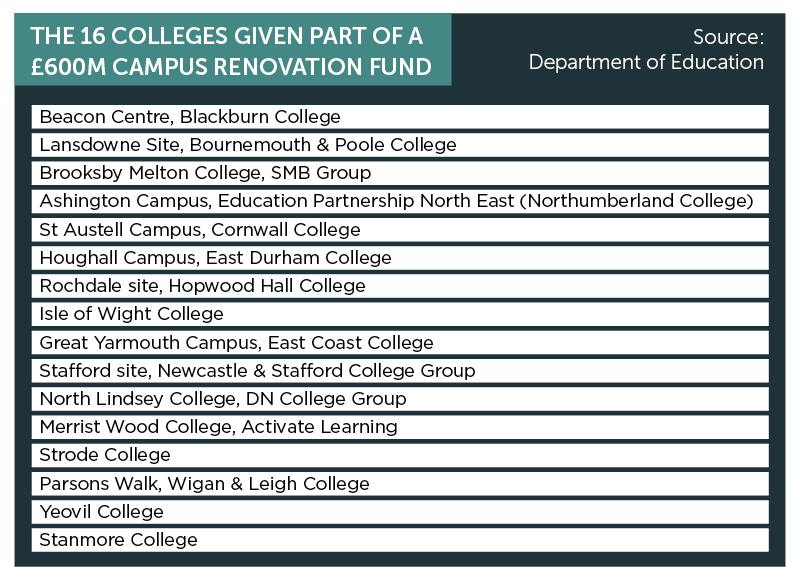Apprentices will soon be unable to walk away from their apprenticeship with a qualification before passing their end-point assessment, in a move designed to reduce the large number of drop-outs.
The Institute for Apprenticeships and Technical Education has confirmed that it will proceed with proposals to make passing an apprenticeship contingent on achieving both the end-point assessment and, if the standard has one, a mandated qualification.
This comes in response to complaints from training providers that, in some sectors, apprentices will leave their programme once they’ve achieved a qualification but before they take the end-point assessment. As well as negatively impacting the provider’s achievement rate, IfATE said these early withdrawals also mean there is no formal record of apprentices’ competence against the knowledge, skills and behaviours (KSBs) required by their apprenticeship standard.
IfATE estimates around 40 per cent of apprenticeships currently mandate a qualification.
Following a consultation, IfATE yesterday released amended criteria it will apply to new and revised apprenticeships from next month on mandatory qualifications.
Here’s what you need to know.
The three mandates
As proposed, there are three sets of criteria that determine whether a qualification should be a mandatory part of an apprenticeship.
Firstly, IfATE will approve a mandatory qualification if they see evidence of a regulatory or legal requirement for it. For example, if a particular qualification is prescribed in regulations for a license to practice.
Similarly, if a qualification is required by a relevant professional body for professional registration, IfATE will want to see evidence that the named qualification is required, that professional body registration is necessary and that said professional body has been involved in the development of the standard.
Thirdly, if employers can prove that a qualification is widely required by their industry and that employers have helped design it, a qualification can be approved as necessary for the labour market.
Integrated assessments
A popular proposal to reduce non-completions by integrating the assessment for qualifications with the apprenticeship end-point assessment (EPA) will proceed. This is designed to reduce the number of apprentices that quit their apprenticeship after they’ve achieved a qualification, but before they take the EPA.
The idea is that a subset of KSBs from the standard will be identified for an integrated assessment which counts towards the qualification and the EPA.
Guidance states: “Where it is possible to do so, mandated qualification assessment(s) must be integrated with the apprenticeship end-point assessment.”
It describes how the apprenticeship assessment plan should be designed so that the award of the apprenticeship and the category takes place “within the same period” and that the apprenticeship and qualification can only be awarded if at least one shared assessment has been passed.
Additional content only if IfATE is too slow
IfATE will proceed with its proposal to reject requests for mandated qualifications that simply add “structure”, “stretch and challenge” or “depth and breadth” to apprenticeships. This is because mandated qualifications must be taken consistently by all apprentices, so introducing qualifications with extra content could disadvantage apprentices in different employer contexts.
The institute also maintains that any mandated qualifications should not teach content that is in addition to the to the knowledge, skills and behaviours set out in the apprenticeship standard.
However there will be a new process which allows for additional content in qualifications “in exceptional circumstances”. IfATE highlights how this could be used for apprenticeships in occupations where technology advances faster than IfATE can update the KSBs in the standard.
In IfATE’s own words: “Respondents were often critical of IfATE’s agility in reviewing occupational standards.”
Precise mandates
Employer trailblazer groups will have to specify precisely which qualification/s should be mandated in the relevant apprenticeship, rather than a generic high-level description.
For example, rather than simply describing a mandated qualification like ‘level 3 diploma in youth work practice’ as now, the new system will require each mandated qualification’s title, level, awarding body, guided learning hours, Ofqual qualification number and the sector subject area.
A new process will also be introduced so that officials can match technical qualifications approved elsewhere within IfATE to an apprenticeship with a qualification mandate, which will then be reviewed by the employer group.
If the employer group believes a qualification, like a level 3 technical qualification of a higher technical qualification, isn’t suitable for the matched apprenticeships, they’ll have to explain why to IfATE.








